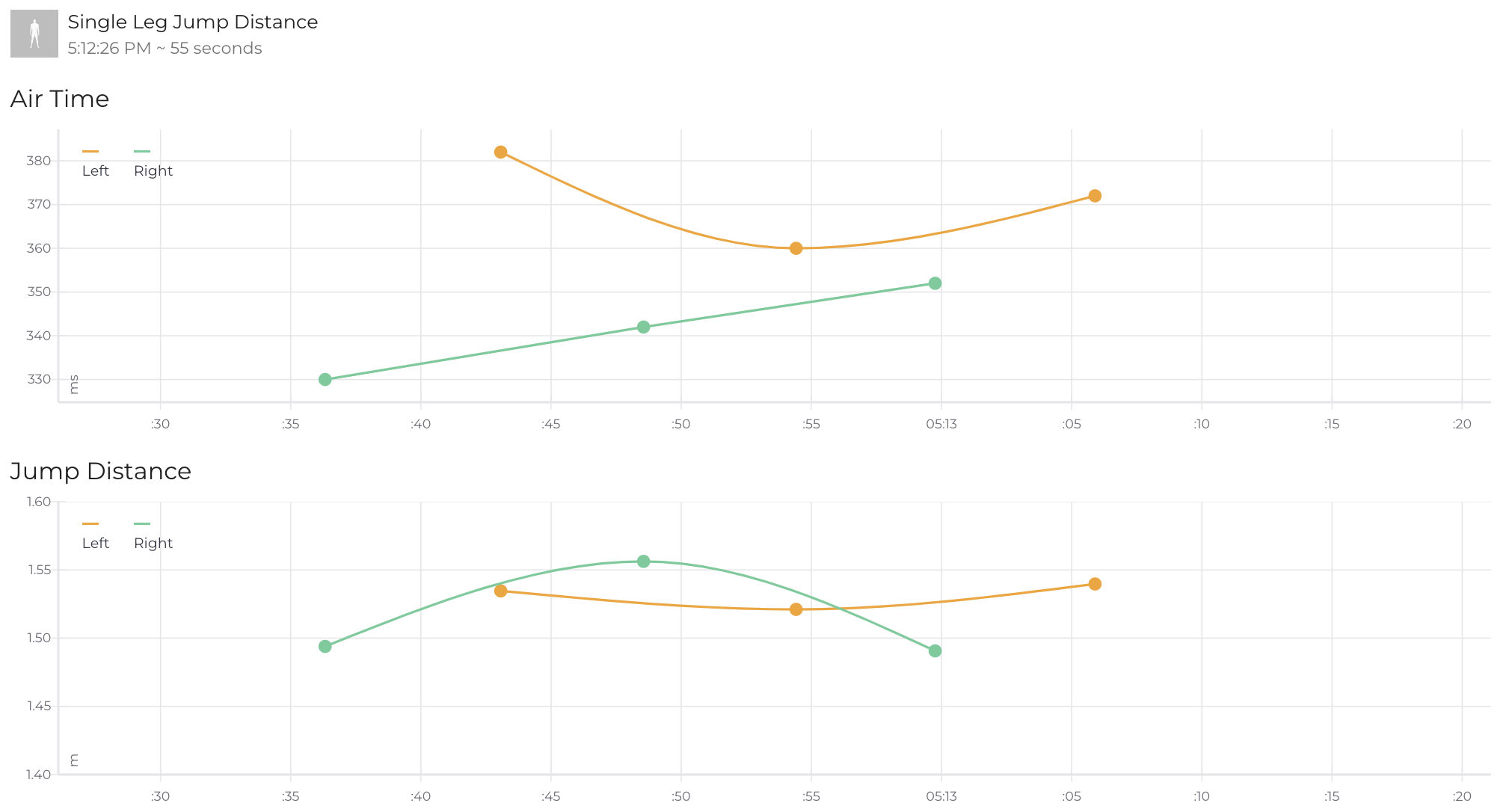Return-to-Play Decision Making after ACL-R
Emma is a female collegiate level athlete who tore her right ACL and is rehabilitating through a standard physiotherapy program after reconstruction. She is using Plantiga insoles to track her progress and return to her pre-injury strength and performance levels. This case study highlights the shortcomings of current clinical RTP evaluation methods.
Single Leg Jump Tests
10 months after her surgery, Emma is performing Single Leg Jumps (SLJ) for Height and Distance to help evaluate her limb symmetry so that she can be cleared for Return To Play (RTP).
Traditional RTP Assessment (SLJ for Distance):
Emma’s Jump Distance Asymmetry of 1.06% R is low enough to clear her for RTP, based on conventional standards.
However, we are missing a key part of the puzzle in this decision-making process, which concerns movement quality. Looking at the way a jump is performed is an often overlooked component. Below are just 2 extra metrics that paint an entirely different picture of Emma’s RTP status:
There was a 26.12% takeoff acceleration asymmetry and a 46.93% landing acceleration asymmetry. Those numbers are certainly not within the 10% bounds for RTP! So what happened? How did Emma achieve a jump distance asymmetry of 1.06% with such vastly different takeoffs and landings?
She used different strategies. In the graphs below, we can see that she had higher air times on her left side, despite similar jump distances, which means that she jumped more upward on her left side, rather than forward.
Whether consciously or subconsciously, Emma essentially “cheated the system” and made herself look like she was more symmetrical than she was.
SLJ for Height Assessment
Emma also performed SLJ for Height in her RTP assessment, with the following results:
Her jump height asymmetry of 19.94% L exceeds the maximum requirement of 10% for RTP, indicating that she still has significant imbalances, particularly in her quadriceps. She will need to improve these before she returns to soccer.
Summary
The discrepancy in performance asymmetries between SLJ for Height and Distance emphasizes the need for different evaluation methods in the clinic. Due to the difficulty of accurately measuring jump height without equipment like force plates or Plantiga, many physiotherapists rely on SLJ for Distance when making RTP decisions. However, as shown here, that may not be an accurate representation of an athlete’s recovery status, because of the potential for compensatory jump strategies. The different jump tests also use different sets of primary muscles, where the SLJ for Distance is more of a hip dominant movement and the SLJ for Height is more of a knee focused movement. A quadriceps imbalance may not show as prominently in SLJ for Distance, leading to a false sense of security and putting athletes back on the field before they are ready.




